Once in a while, a person with a singular vision shows up and alters how we view the world using the artifacts of culture. This is true across a variety of fields, including the design of everyday products. The thinking and creativity of these unique individuals is just right for the given era. Steve Jobs is one of those people. He had a keen eye for product design and a maniacal commitment to simplicity. Something he apparently learned from the Japanese. Much to the exasperation of engineers, he always put design at the forefront, even if alternate approaches would’ve been faster and more economical to implement. In Walter Isaacson’s biography, the author mentions how Steve Job’s father used to work on cabinets and took great care to craft even their backs, which are usually hidden from view. Similarly at Apple, Jobs insisted that even the inside of the products should look aesthetically pleasing, in spite of the fact that he went to great lengths to ensure that customers could not open his machines and view the inside. He knew it was there and that was enough.
There are other brilliant designers like Steve Jobs out there, but let’s face it, they are far and few between. This is perhaps one of the reasons why different approaches to product design have been taken. Product design in general has moved away from the times when only a single individual or core group of people thought up ideas then went on to design the form and function of the product. At some point, customer feedback is necessary. Some designers have taken this to a new level by actually including the customer in the prototyping stage.
A few years ago, one of the designers for a Taiwanese company (TWSBI) began using social media to develop a fountain pen. Facebook and other public forums facilitate access to those who actually use a product. So, the designer cleverly and astutely used the feedback he received, including it in his prototypes, then requesting feedback again for over the course of a year or so. It was a virtual collaboration. Eventually a fountain pen was created. It was called the TWSBI Diamond 530. Unfortunately, I don't have picture of it, mine broke a few years ago. The newest model in that line is called the 580. I don't own one, but my newest acquisition, the TWSBI Eco, generally contains some of the design principles found in the original.
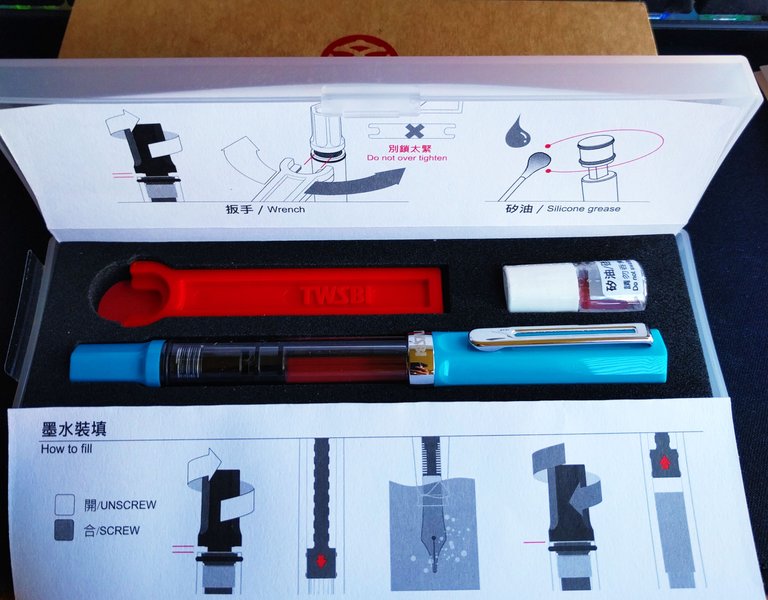
The original fountain pen was a hit. It was an affordable demonstrator, meaning that the acrylic body was transparent, and you could see the internal mechanics along with the ink sloshing around. In the olden days when fountain pens were all the rage, demonstrators were used to show customers how the pen worked. They were not meant for sale. It was a great idea by TWSBI to make theirs a demonstrator. Given that the TWSBI pen had been designed with hobbyists in mind, the pen came with a small metal wrench that allowed the user to take the pen apart to clean it or service it. It also came with a small bottle of silicon grease to lubricate the piston mechanism. Even the packaging was superb. The pen came in a classy plastic case looking like some alien weapon with clearly laid out info-graphics illustrating how to use the fantastic artifact. Talk about experience design! Even Neil Gaiman has used TWSBIs. They are great writers with nibs made in Germany. Unfortunately, as time went on, some problems appeared on the pen, chiefly, the pen had a tendency to break apart. Mine basically exploded into pieces in my hands. The company immediately changed the acrylic resin to make it more resistant to breakage, but I think the negative publicity still haunts them like an albatross around their neck. No online discussion of TWSBI pens on social media is without someone pointing out the acrylic problem, which TWSBI keeps assuring us was fixed long ago.
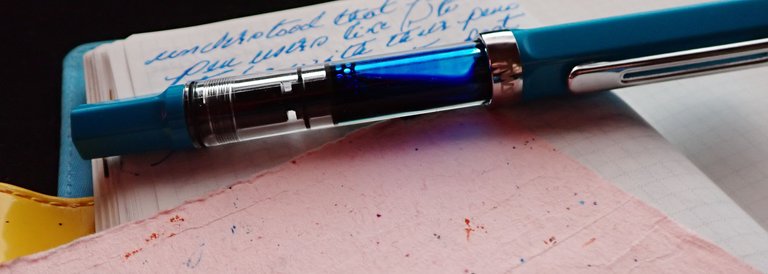
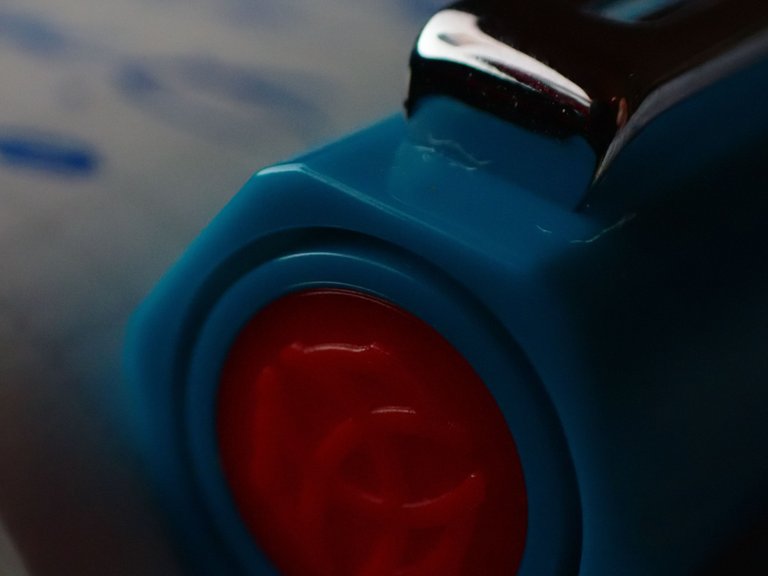
TWSBI has become successful company in the stationery world for making products that take into account the users’ likes, dislike, and ideas. This approach is different from reliance on the singular genius with the Midas touch or the mad monk-engineers in secret labs. I don't think the designers engage the public as closely as before, but the lessons they learned from that exercise seem to have carried forward. They recently released a blue version in their Eco series, which clearly has DNA from the original Diamond 530. The pen is relatively cheap, as far as fountain pens go. It comes with a plastic wrench instead of the usual metal, and a tiny tiny vial of silicon grease. The designers made a few changes to ensure the price was kept down. Even the packaging is simpler with a subdued Muji-style case instead of the fancy plastic one. In spite of its low price, this instruments is a joy to write with. The smooth German-engineered medium nib glides across the page in silky inky goodness. What a classic! It is a perfect example of how different approaches can be used to develop a successful product. We may not all be as brilliant as Steve Jobs, but with the right approach, we can all participate in the design of beautiful things.
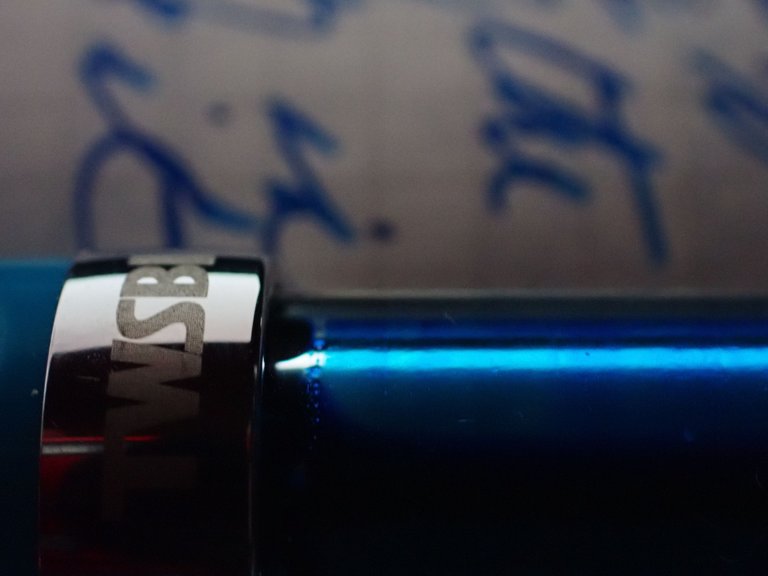
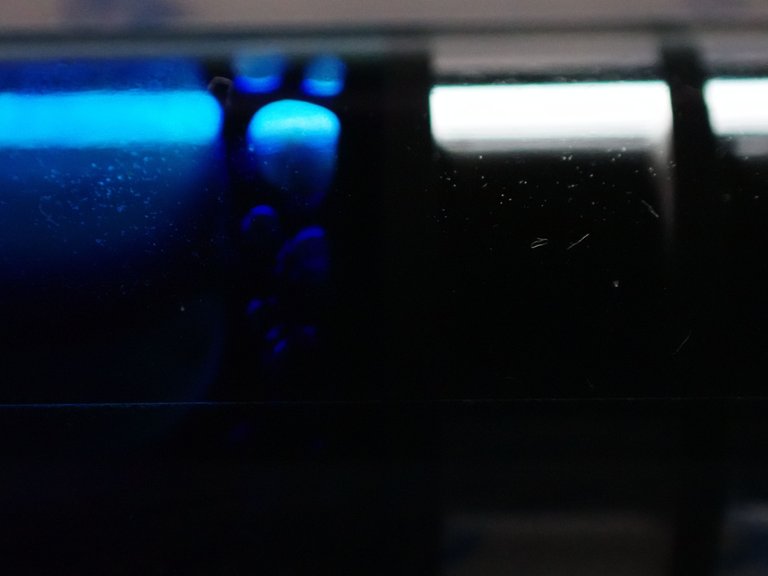
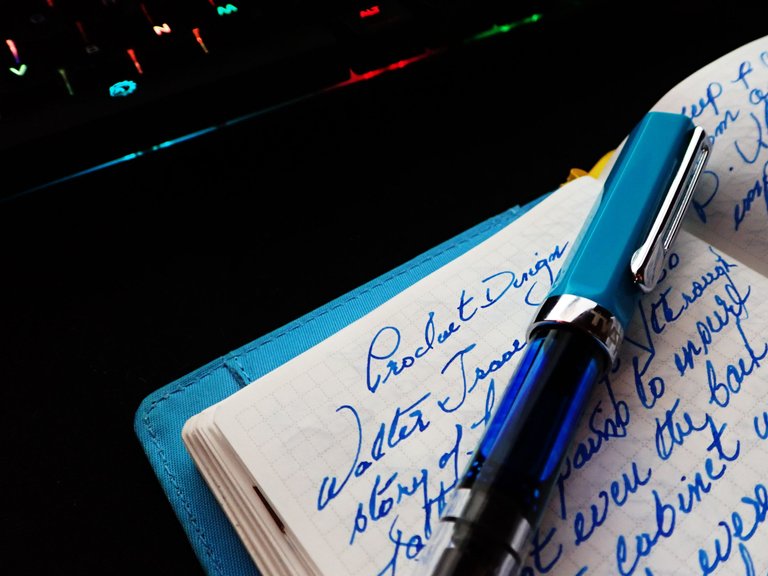
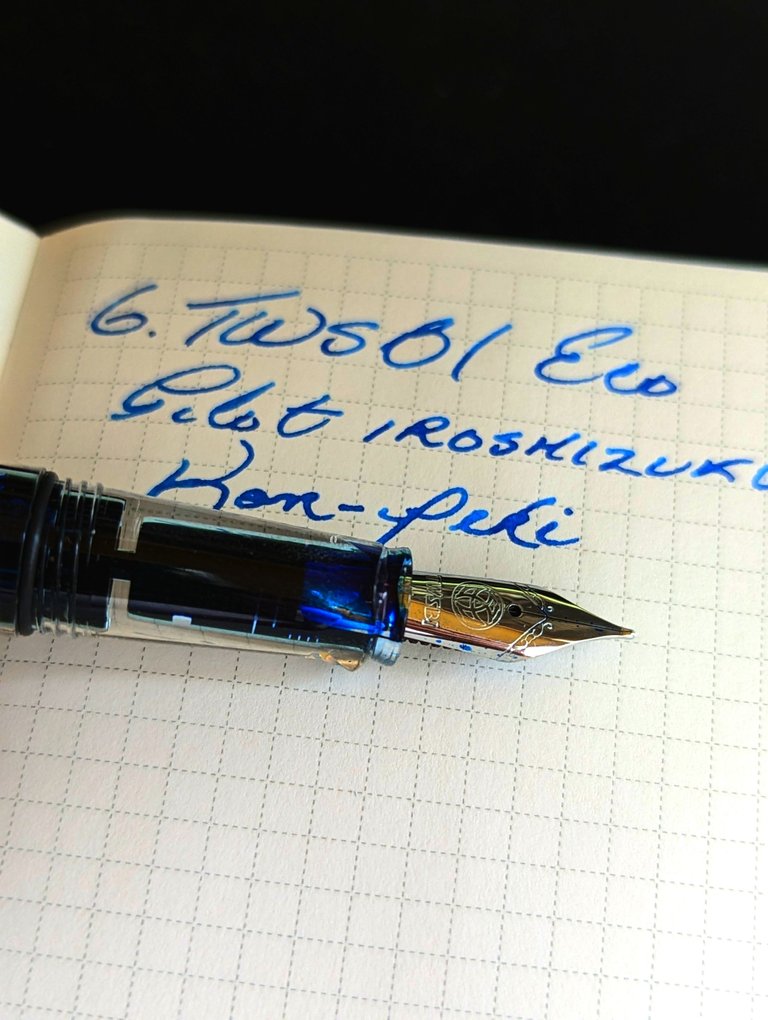
Resource

Images by @litguru
:D LOL - That's how I feel when I sew clothes. It doesn't satisfy me if only the outside has neat seams, it should also look appealing from the inside. Easier said than done. My husband says: "It doesn't matter, no one can see anyway." But I think that a self-sewn, fine garment should also look beautiful on the inside. This is usually achieved with so-called French seams.
Your example with the fountain pen shows once again how interested people are in addressing issues of design and functionality. It is fun to be involved in the development and refinement of products and actually there is an inventor in all of us if we also use the products we buy intensively. Especially where the use serves more than a purely functional purpose. Of course, you can take it to the extreme with this, something the Japanese are particularly good at. LOL
I hope the mess wasn't too big when the fountain pen exploded in your hand. What a pity that it had this weakness after all, even though so many minds worked on it. The long-term effects, however, can of course hardly be predicted.
Just the other day I bought a stapler suitable for working with wood and realised that probably none of the developers could ever have tried this themselves, because if this stapler had been tested, they would have found that the front end must never have a sharp, raised edge, because you have to exert pressure at the front with the heel of your hand so that the metal can press properly into the material. Since I didn't know that beforehand, I bought the thing unaware of what it must be able to do. Wasted money.
Thankfully my pen was empty at the time, so no mess. In spite of this hiccup, the company has become successful because of their attention to detail and excellent customer service. If any pieces of your pen breaks, they'll replace it, no questions asked. So, you basically have a pen for life.
Product design is an art and science that is immensely fascinating. A product is not just a work of art that will be admired from a distance, but a functional piece that somebody will interact with. I hope your wood work is going well in spite of the stapler's design shortcomings.
Thank you for visiting!
That is hopefully something which always will be successful.
Having things for life I truly appreciate.
Yes, if it combines both, it's the best, I agree. Maybe I need to come up with a chalk-design pen for tailors needs. HaHa!
The funny thing is that my husband found his old stapler after the first and second searches for it were in vain.
It worked just fine and has a very smooth surface on the front. I used it for the rest of the woodwork. We have a huge conservatory under a glass dome (actually a parymid shape). In the summer we get baked there and we need shade for protection. So we came up with a solution. After some thinking and talking, we decided with stretching jute fabric on wooden frames and then gluing magnets to the back ends, which we then stick to the iron frames of the windows. They are huge!
But then we decided to go for the hippy solution you see here. HaHa! Still some more shawls to go. But the framed pieces of wood also serve their purpose, instead of hanging on the slanted windows, we simply placed them in front of the windows below.
On the pics they are still in the making.
That's a cool room. Reminds me of Goa! Open but private. I like that.
!discovery 20
Much appreciated! Thank you @phage93!
This post was shared and voted inside the discord by the curators team of discovery-it
Join our community! hive-193212
Discovery-it is also a Witness, vote for us here
Delegate to us for passive income. Check our 80% fee-back Program
That would be like saying you'll never eat peanut butter again, because there was a recall on it a long time ago? Or that you won't buy from Samsung because one of their products was defective years ago?
This post has been manually curated by the VYB curation project